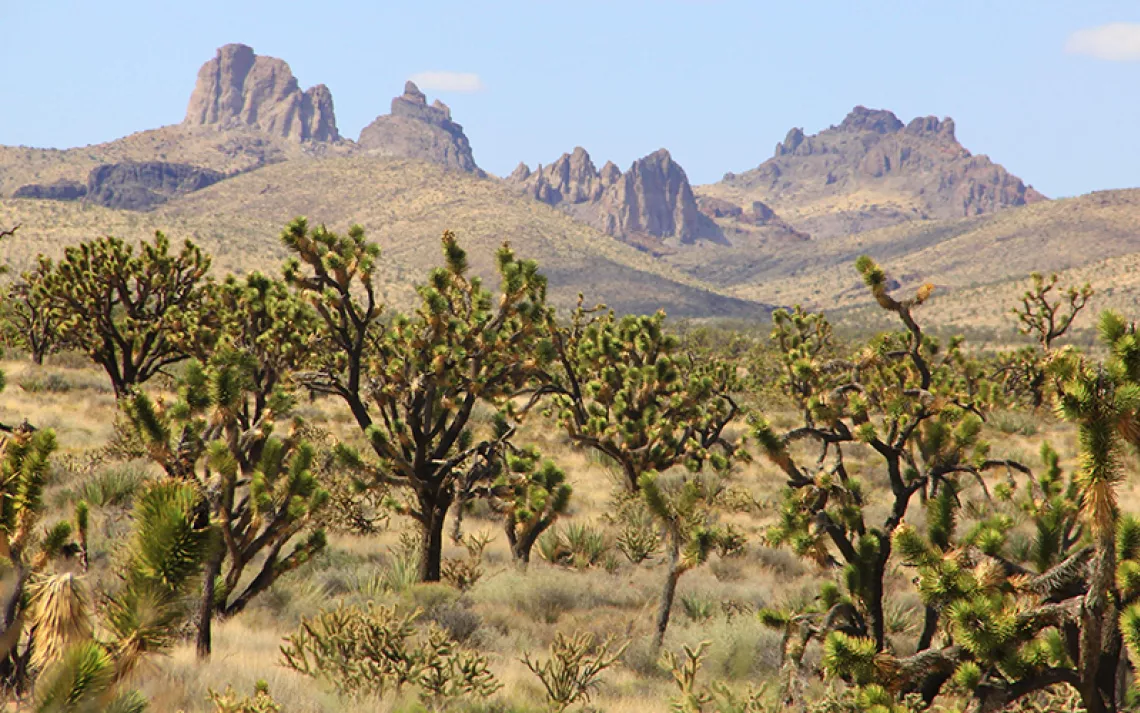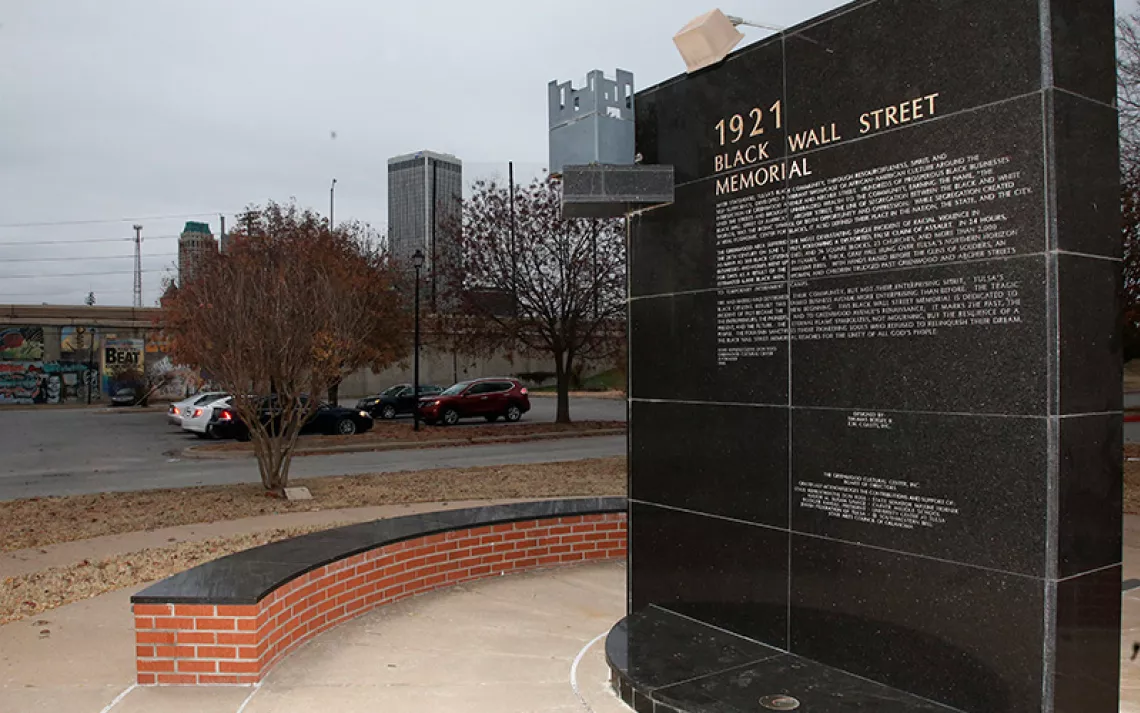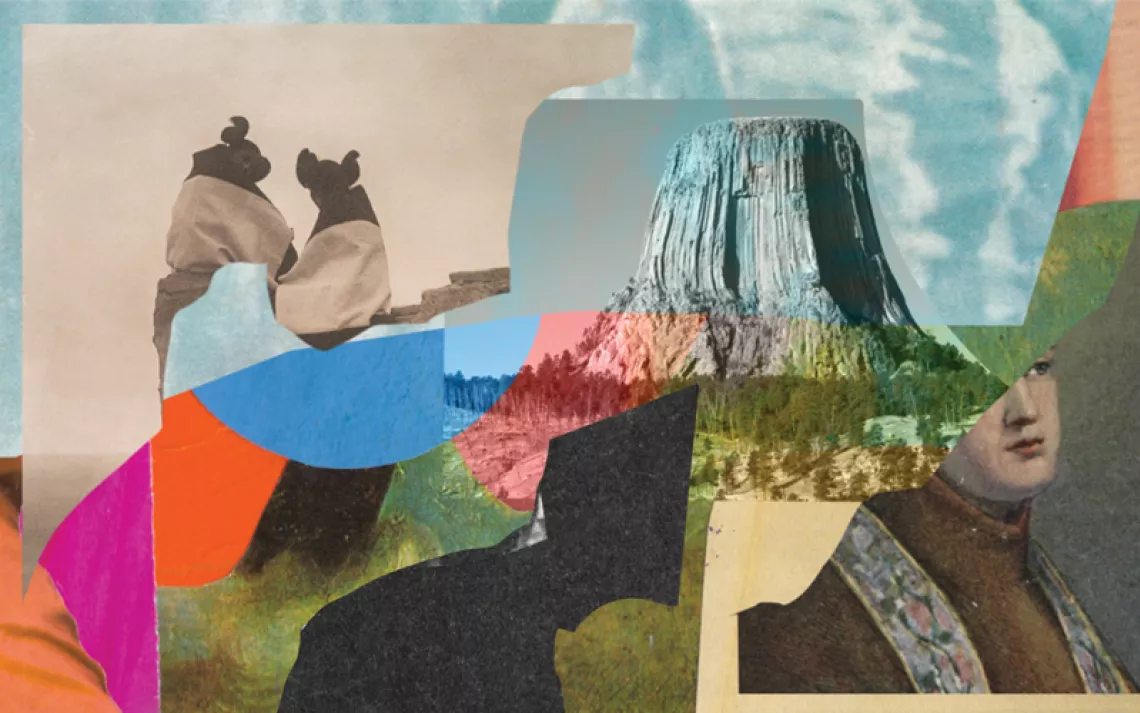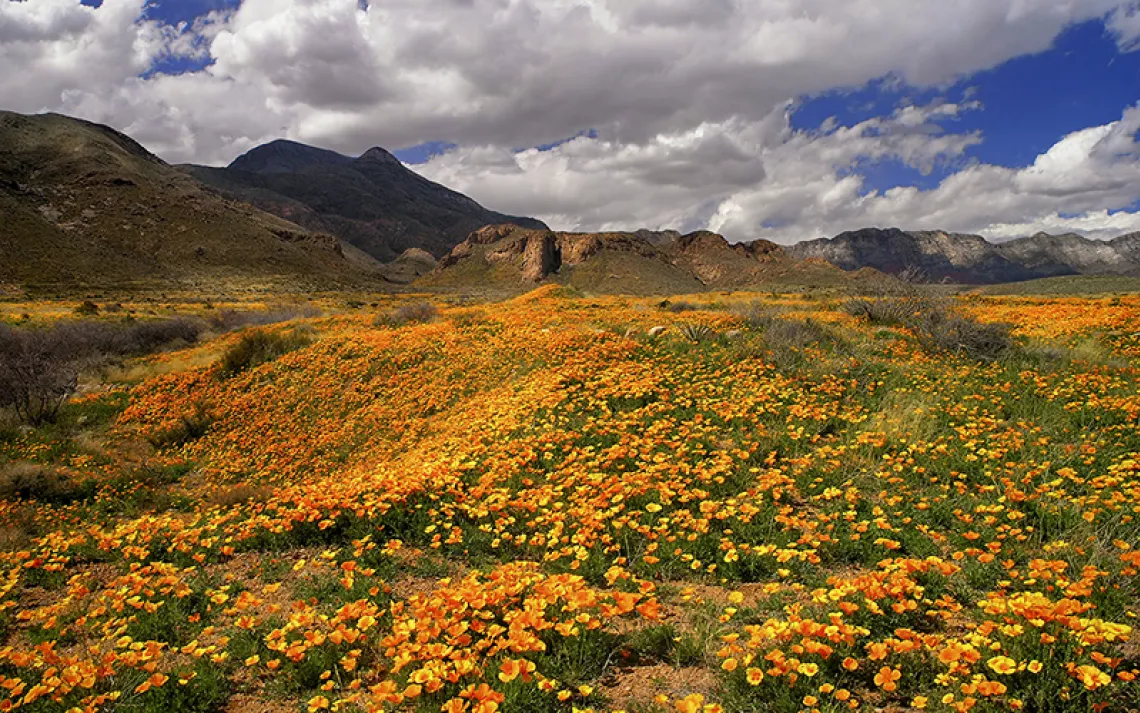What’s in a Name?
Trump and Zinke changed the Bears Ears National Monument name. Why?
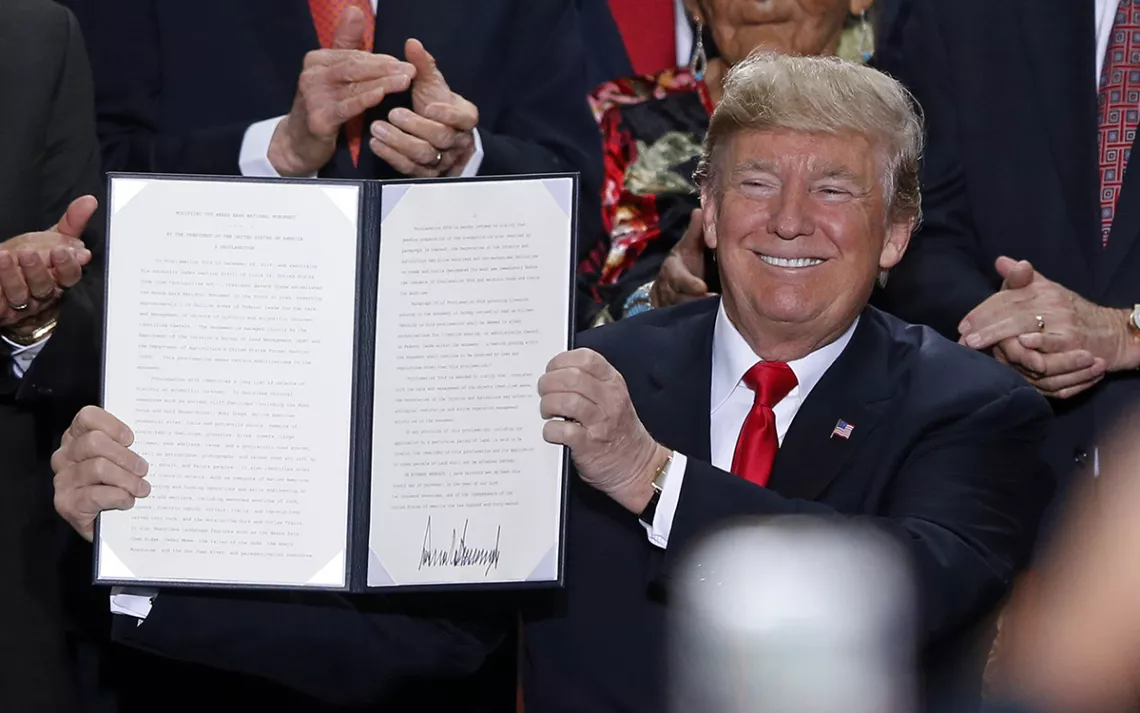
Photo by AP Photo/Rick Bowmer
There is no great mystery as to why Donald Trump and Interior Secretary Ryan Zinke decided to try slicing more than a million acres off Bears Ears National Monument and reduce it to a fraction of its original size. The motives are the usual ones.
Kowtow to energy interests above all others?
Check.
Throw red meat to white, rural voters in San Juan County, Utah, who feel bullied by the federal government and are sick of its “intrusions” (even though those often benefit them)?
Check.
Undo something Obama did?
Double-check.
A less reported reason that Trump reduced the monument was that Orrin told him to. Orrin is Senator Orrin Hatch, the Utah Republican, who had been leaning on Donald Jr. (considered the Trump family “outdoorsman” thanks to his love of killing elephants and leopards) since before the presidential election. Hatch, the ex-amateur boxer turned senatorial pit bull, just wouldn’t let go of what the president once referred to as “Orrin’s monument thing.” Although the specifics of an Oval Office meeting between the president and the senator five days after Trump took office went unrecorded, Trump emerged muttering about how tough Hatch was.
“I also want to recognize Senator Orrin Hatch, who—believe me, he’s tough,” Trump recounted in April 2017 when he signed an executive order calling for a review of national monuments established in the last 20 years. “He doesn’t give up. And he’s shocked that I’m doing it, but I’m doing it because it’s the right thing to do.”
The author of The Art of the Deal then turned docilely to the stubborn alpha male who has been in the Senate longer than any Republican and said, “But I really have to point you out; you didn’t stop.”
Seven months later, Trump was in Salt Lake City, a smiling Hatch at his shoulder, making a show of signing another executive order to reduce Bears Ears National Monument and telling the crowd that what he was doing was listening to the local voices. “The families and communities of Utah know and love this land the best,” the president said. “And you know the best how to take care of your land.”
What Trump seemed to have forgotten about—or more likely never knew—was that some of “the locals” have lived in the neighborhood for thousands of years, and that there are more Native Americans living in San Juan County than there are non-Hispanic whites. In the coming local elections this November, two out of three county commissioner seats have a good chance of going to Navajo candidates who support the original, Obama-designated Bears Ears National Monument. Trump may be right that the “families of Utah” know best—he just doesn’t seem to understand who those families are.
To return to my point, there is little mystery in why Trump and Zinke did what they did. It fits a clear pattern. What is less clear is why they chose to not just reduce the monument, but also to rename it.
*
Last January, I met with James Adakai. Adakai is the president of the Oljato Chapter of the Navajo Nation and a representative on the Bears Ears Commission, which is charged by the original monument proclamation to work with federal agency partners to collectively manage the monument. We sat on a bench at a picnic table behind the Recapture Lodge in Bluff, Utah, and he told me about all the work that went into the creation of the Bears Ears monument proposal and the thinking that went into the name.
He pointed west toward Bears Ears.
“These are sacred ancestral hills,” he began. “For thousands of years our ancestors drew strength from them. The minerals, the vegetation, the woods, the birds, all the traditional uses. In Navajo it is a way of life. We want to teach that way to future generations. That’s what Bears Ears is all about.”
Although the Bears Ears coalition is today made up of five tribes, Adakai explained that it was Navajos who did the early work through a grassroots group called Utah Diné Bikéyah.
“Diné Bikéyah did the cultural mapping of the area,” he told me. “They did the legwork, the foundation, data collection and research, identifying sensitive cultural historical areas in the Bears Ears region. The sacred places, the Anasazi ruins, the burial ground, the vegetation. That was how they formed the maps and decided what should be saved. They also did interviews of 80 elders. The cultural knowledge of the elders, their historical knowledge, was immense, and it wasn’t easy to collect. So that contradicts one of the assumptions about the Bears Ears proposal: that it came up overnight. The people think we just suddenly came up with this plan. But it wasn’t that way. There was a huge effort put into the research and the planning.”
After this initial work, Diné Bikéyah contacted the other tribes.
“While the Diné Bikéyah were putting the plan together, they decided to reach out to other tribes. The Hopi and Zuni because of the rock art and Anasazi ruins. The Ute Mountain Ute, who have historically used the land and still have a piece of land east of Bears Ears. And also of course the Utes who had historical ties. So that formed the Inter-Tribal Coalition.”
The original name for the monument was also the product of much deliberation and inter-tribal cooperation. Since Diné Bikéyah did most of the early work, the coalition briefly considered using those very words, which mean “people’s sacred lands” in Navajo, as the name. But each of the five tribes had their own names for the twin buttes of Bears Ears: Hoon'Naqvut, Shash Jáa, Kwiyagatu Nukavachi, Ansh An Lashokdiwe. And each of those names means, roughly, “bears ears.” The coalition concluded that the English name was best, to show unity and to avoid conflict between the tribes.
Then along came Trump and Zinke. They not only greatly reduced the monument (by 85 percent) but also chopped it into two sections. The directive of the Antiquities Act, by which national monuments are created, stresses the need to preserve “historical landmarks, historic and prehistoric structures, and other objects of historic and scientific interest.” Archaeologists who have studied the area agree that there is no scientific or cultural logic to the way the new borders were created; in some cases, the new boundary lines cut right through the middle of the sites of ancient communities that the act was designed to protect. But the Trump administration was not content to slice and dice without scientific or cultural logic. Trump and Zinke decided to rename the two smaller sections as well. They called the southern section, which contains the Bears Ears buttes, by its Navajo name, “Shash Jáa.” They have designated the northern section “Indian Creek.”
Which gets to the real mystery surrounding this national monument controversy: Was the renaming born of cynicism or stupidity?
Most of the members of the coalition think this is an attempt to create dissension among the tribes. As Gavin Noyes, executive director of the Utah Diné Bikéyah, told Brain Maffly of The Salt Lake Tribune, “The tribes have all gotten together and they have designed themselves as a commission and chosen a name that works for everybody. It’s collaborative and it’s in English. Even though every single tribe has a name for Bears Ears in their own language, the selection of the Navajo name tramples the Native American true history of the place.”
Secretary Zinke, when confronted with this idea, expressed shock, saying, “Certainly, I don’t think anyone would object to having a Native name rather than Bears Ears as the name of the monument.”
Zinke also claimed to have consulted with the leaders of Diné Bikéyah about the new name. Navajo tribal officers and Navajo Nation attorney Ethel Branch have said otherwise. There was no consultation with actual tribal leaders.
There is a small chance that, given their complete lack of knowledge of the place and the people, Trump and Zinke’s renaming grew out of ignorance. That would at least help explain the tone-deaf choice of the leftover word “Indian” in the name of the northern section.
Either way, the renaming reveals a lack of understanding of what really happened in the course of the campaign to establish the monument. The coalition’s effort was one of healing and unity, and the new name speaks to division, disunity. After much time, work, and thought, something historic was created with the establishment of Bears Ears National Monument. And then in no time and with little work it was decided that the thing would be destroyed. Does it really matter whether it was done out of ignorance or with the calloused forethought of cynicism?
To James Adakai, it matters.
And he is pretty sure he knows his answer to the mystery, which is no mystery at all to him. “They are trying to split us up,” he told me. “Trump is setting tribe against tribe. He is dividing and renaming the monument in a way that messes with the tribes. Trying to disunite. It is an insult to us.”
 The Magazine of The Sierra Club
The Magazine of The Sierra Club
